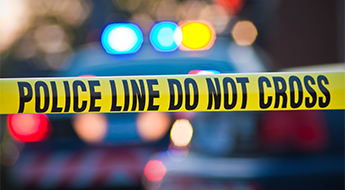Andrew V. Papachristos
John G. Searle Professor | Professor of Sociology
IPR Director and Fellow | Director of the Center for Neighborhood Engaged Research and Science (CORNERS)
PhD, Sociology, University of Chicago, 2007
Sociologist Andrew V. Papachristos is IPR director and the John G. Searle Professor of Sociology.
His research aims to understand how the connected nature of cities—how their citizens, neighborhoods, and institutions are tied to one another—affect what we feel, think, and do. His main area of research applies network science to the study of gun violence, police misconduct, illegal gun markets, street gangs, and urban neighborhoods. He is also in the process of completing a manuscript on the evolution of Black street gangs and politics in Chicago from the 1950s to the early 2000s. Papachristos is actively involved in policy-related research, including the evaluation of gun violence prevention programs in several U.S. cities.
An author of more than 50 articles, Papachristos’ work has appeared in journals such as JAMA, the American Sociological Review, Criminology, and the American Journal of Public Health, and publications such as the New York Times, Washington Post, and Chicago Tribune have covered his work. Papachristos has received numerous awards, including the American Society of Criminology’s Ruth Cavan “Young Scholar” award and The National Science Foundation’s Early CAREER award. In 2019, Papachristos became the faculty director of the Center for Neighborhood Engaged Research and Science—or CORNERS—at IPR.
He is a Chicago native and earned his PhD from the University of Chicago.
Current Research
A Networked Approach to Gun Violence. A large part of Papachristos' research focuses on how gun violence is influenced by and gives shape to social and behavioral networks. This line of inquiry maintains that understanding who becomes a victim of gun violence requires analyzing not just individual or ecological risk factors, but also individuals’ social networks. His early research examined how networks among street gangs facilitate the social contagion of violence (American Journal of Sociology 2009; American Sociological Review 2013). Funding form the National Science Foundation and the MacArthur Foundation have allowed him to expand this research to consider individual victimization: Why particular people become victims of gun violence while others with similar sets of risk factors do not. Two key findings have emerged from this research. First, gun violence is more concentrated within social networks than within populations or places. For example, 70 percent of all gunshot injuries in Chicago occurred in networks containing less than 6 percent of the city’s population (Social Science & Medicine 2015; American Journal of Public Health 2014). Second, gunshot victimization diffuses through networks in a cascading fashion similar to an infectious disease, and network models offer a potential way to track the spread of victimization as it moves from person to person (e.g., JAMA Internal Medicine 2017). Additional lines of inquiry in this area are currently in various stages of analysis and production, including how such networks link geographic neighborhoods (American Journal of Sociology forthcoming).
Understanding Neighborhood Violence Prevention. Papachristos is working with Professor David Hureau at SUNY Albany to conduct the Violence Intervention Worker Study (VIeWS), a pilot survey of nearly all violence intervention workers, or street outreach professionals, in Chicago. The survey was co-developed with a network of Chicago-based street outreach organizational partners with whom the research team has longstanding relationships. The survey will develop foundational knowledge about street outreach worker backgrounds and demographics, life histories, human and social capital, relationships with clients and neighborhoods, work organization and supervision, family and home life, impact of Covid-19, and exposure to trauma and substance abuse. This exploratory study will identify broad trends in the backgrounds and careers of Chicago’s street outreach workers and potential avenues for improving the professional experience of street outreach work in order to better meet the needs of the outreach workers themselves. The study team hopes to use findings gleaned from this study to develop a multi-site and longitudinal study of violence intervention workers across the United States.
Selected Publications
Hureau, D., T. Wilson, W. Rivera-Cuadrado, and A. Papachristos. 2022. The experience of secondary traumatic stress among community violence interventionists in Chicago. Preventive Medicine 165: 107186.
Smith, C. and A. Papachristos. 2022. Violence brokers and super-spreaders: How organised crime transformed the structure of Chicago violence during Prohibition. Global Crime 23(1): 23–43.
Freedman, A., A. Papachristos, B. Smart, L. Keenan-Devlin, S. Khan, A. Borders, K. Kershaw, and G. Miller. 2022. Complaints about excessive use of police force in women’s neighborhoods and subsequent perinatal and cardiovascular health. Science Advances 8(3): eabl5417.
Sierra-Arévalo, M. and A. Papachristos. 2021. Bad apples and incredible certitude. Criminology and Public Policy 20(2): 371–81.
Wood, G., T. Tyler, and A. Papachristos. 2020. Procedural justice training reduces police use of force and complaints against officers. Proceedings of the National Academy of Sciences 117(18): 9815–21.
Zhao, L. and A. Papachristos. 2020. Network position and police who shoot. The ANNALS of the American Academy of Political and Social Science 687(1): 89–112.
Wood, G., D. Roithmayr, and A. Papachristos. 2019. The network structure of police misconduct. Socius 5.
Wood, G. and A. Papachristos. 2019. Reducing gunshot victimization in high-risk social networks through direct and spillover effects. Nature Human Behaviour 3: 1164–70.
Papachristos, A., N. Brazil, and T. Cheng. 2018. Understanding the crime gap: Violence and inequality in an American City. City & Community 17(4): 1051–74.
Green, B., T. Horel, and A. Papachristos. 2017. Modeling contagion through social networks to explain and predict gunshot violence in Chicago, 2006 to 2014. JAMA Internal Medicine 177(3): 326–33.


